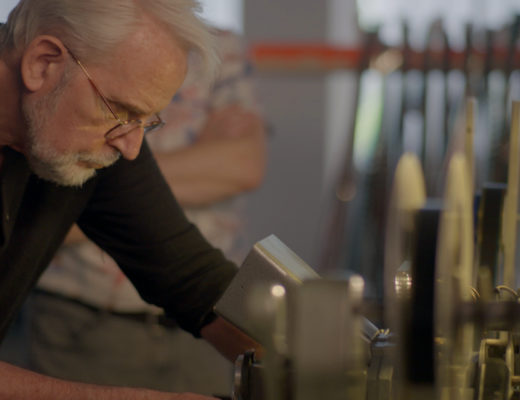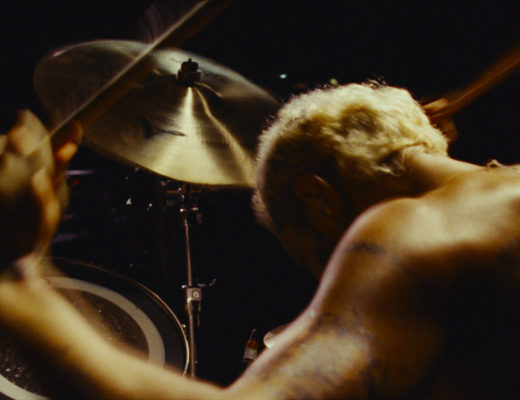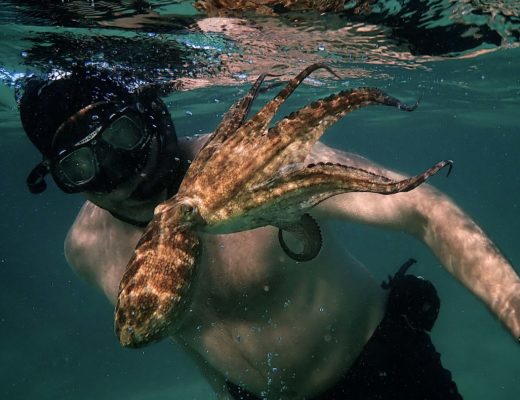Rick Pearson, ACE has been nominated for an Emmy, a BAFTA, multiple ACE Eddies, and an Oscar. He has worked on films that have grossed billions of dollars, like Men in Black II, The Bourne Supremacy, Blades of Glory, Quantum of Solace, Ironman II, Red Dawn, Maleficent, The Accountant (for which I interviewed him previously), Kong Skull Island, Justice League, and Godzilla: King of the Monsters.
Today we’re discussing his work with Patty Jenkins on Wonder Woman 1984. The interview was conducted back in July of 2020 and is available as a podcast.
(This interview was transcribed with SpeedScriber. Thanks to Martin Baker at Digital Heaven)
HULLFISH: You and I both had careers – a long time ago – as on-line finishing editors. How did you make the jump from on-line to creative editing on the biggest feature films in the world? Somehow I didn’t find quite the same path from on-line.
PEARSON: When we first moved out to L.A. back in 88 I was interested in two trajectories; cinematography and editing. I came out in the middle of a writer’s strike and I got a job as a P.A. on a science fiction comedy called Mutant on the Bounty.
I was on the set there and I sort of realized even then that the set probably wasn’t the place for me in terms of cinematography and even that world. I much preferred the more controlled environment of the cutting room and the creativity that I saw that was involved there.
So I began to pursue editorial. Got another P.A. job at a little commercial house, but eventually wheedled my way into cutting music videos and eventually commercials. For a while there, I did a lot of freelance work out of Propaganda Films which is where Michael Bay and Spike Jones and Antoine Fuqua and David Fincher all came out of there.
But I got frustrated with that format in that I wanted to do narrative. So I took a step back and got a job as an assistant on a television series for Wolf Pictures over at Universal. But then just kept banging my head against the wall, trying to get them to let me cut.
I was cutting scenes with some of the editors I was working with and finally created a little trailer for one of the shows I was working on and showed it to Dick Wolf and he really liked it and I said, “Well, why don’t you just give me a shot to cut a show for you?” And God bless him he did.
So I did that for a while and then eventually I really wanted to do something on a larger scale — like features. The transition there was I did a mini-series called From the Earth to the Moon for HBO. And those were all feature directors — for the most part — one of those directors — John Turtletaub — who I had the fortune of working with, suggested me to Imagine Pictures. They were looking for an editor for this film called Bowfinger which was being directed by Frank Oz.
And so I met with him and he was kind enough to give me a shot and that was it.
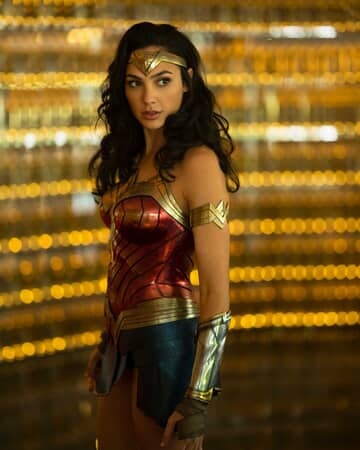 HULLFISH: That’s awesome. I’m really interested in those interviews with the directors because to me it has always felt like those interviews are more about getting to know you as a person, getting to know the directors as a person, and feeling like you can live with that person for a year.
HULLFISH: That’s awesome. I’m really interested in those interviews with the directors because to me it has always felt like those interviews are more about getting to know you as a person, getting to know the directors as a person, and feeling like you can live with that person for a year.
PEARSON: Yes. Yeah.
HULLFISH: I mean, it’s not so much about proving your talent or “Hey, I’m a great editor.” It’s “I think you’re going to like working with me and here’s how I like to collaborate.”.
PEARSON: I can’t tell you what it’s like from a director standpoint. I think you’re probably both checking each other out and certainly with some of the directors that I’ve gone to meet with, i’ve checked them out ahead of time with other people that worked with them — what they’re like; what their work habits are. Often I try to find out if they have a family. If they’re happily married. Those things are often key. Or is there only life really directing this particular movie because then that that could be a bad sign.
HULLFISH: That is an interesting little tip!
PEARSON: For example, when I first met with Frank Oz for Bowfinger, one of the things I said to him was, “I’m certain that you can have 10 people in here with resumes that are 10 times length of mine, but they all came from somewhere and this is me coming from somewhere. So if you give me a shot, I’ll work 120 percent for you.”.
It’s assessing whether or not this is somebody you can literally get quarantined with, as it were, for a year or more. It’s a long time to be together in a room. Figuring out how that collaboration is going to work is key.
HULLFISH: I think Olivia Wilde — who just directed Book Smart — said, “An editor/director interview is a lot like going on a first date and deciding if you want to get married.”.
PEARSON: (laughs) I think that’s pretty accurate. It’s an intense relationship and you need to figure it out pretty quickly. With Patty Jenkins, director of Wonder Woman, we met back in November 2016 and it wasn’t until February 2017 that she’d finally decided that she wanted to hire me because she just wanted to be very thoughtful about the process and made sure she checked every option and checked me out thoroughly. It. Is like getting married.
HULLFISH: What was the schedule like on the film? When did you start cutting?
PEARSON: I actually started beginning of June of 2017 and we had four or five weeks in Washington D.C. and then we went to the UK and we were out at Warner Brothers Leavesden. We had cutting rooms there for the bulk of that year. We did go to the Canary Islands, Fuerteventura, for about four or five weeks around September and we wrapped production just before Christmas. It was a long, long shoot and then we moved into Soho and posted in the UK for the balance of the picture. So it was almost 22 months all in for me.
HULLFISH: Did you edit in those locations? Were you actually in Washington DC?
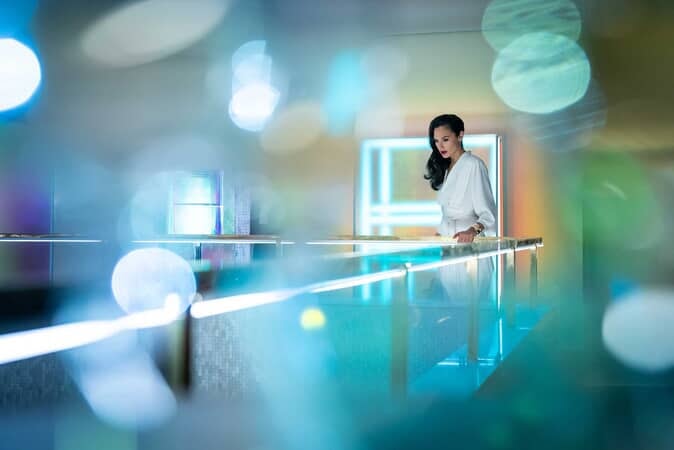 PEARSON: Yeah.
PEARSON: Yeah.
HULLFISH: Why do you think that it was important for you to be there? Because a lot of editors that are working on films big films like that, they just stay in L.A. and the footage is delivered to them.
PEARSON: I actually prefer to be on location, particularly when it’s with a director that I’ve not worked with before. Part of that is that oftentimes as you’re cutting, and if an editor perceives that there’s a question, the director is in the middle of production and is often so focused on what’s the day-to-day of the fires growing right in front of their face, that those kinds of issues sometimes get put to the side.
I find that when I do have a question or a concern I’m happy to take my laptop down to the set and wait between setups, particularly when it’s a director that I don’t have a prior relationship with. I just love the set. I don’t wanna be there. It’s not my place to be there for 10 12 hours a day, but I like the vibe that I get off of it and it helps put things in perspective for me — that I’m working on a project with all these people contributing and the scale and scope of it.
HULLFISH: Your point about going down to the set with your laptop is interesting. I just talked to somebody else that said that they prefer doing exactly what you just said because if you make a call and say, Hey it’s Rick. Could you come to the cutting room it’s almost like an imposition, but if you’re down there on the set — waiting around in between a lighting setup — it feels much less like you’re imposing or it’s a scheduled thing.
PEARSON: I think that’s right. For some directors — most actually — I think Patty is certainly an example of that, when she’s shooting, it’s all about shooting, and “what am I doing this day what am I doing today” and her responsibility to all those crew members and her cast.
When I would come down to the set and I would have my laptop I would just kind of wait for my turn. I would say to her assistant, “I’d like to come down. I want to show Patty something.” She’d say, “We’re going to be turning around to a different setup in 15 minutes.”
So she would have a sense of knowing that I was gonna be coming and I do think it’s a little less intrusive than “Come to the cutting room after you wrap.” By the end of the day often these directors are so exhausted and they’ve got 20 more people that have been lining up all day to hound them as well, so to be able to fit into their schedule throughout the day for me is very valuable.
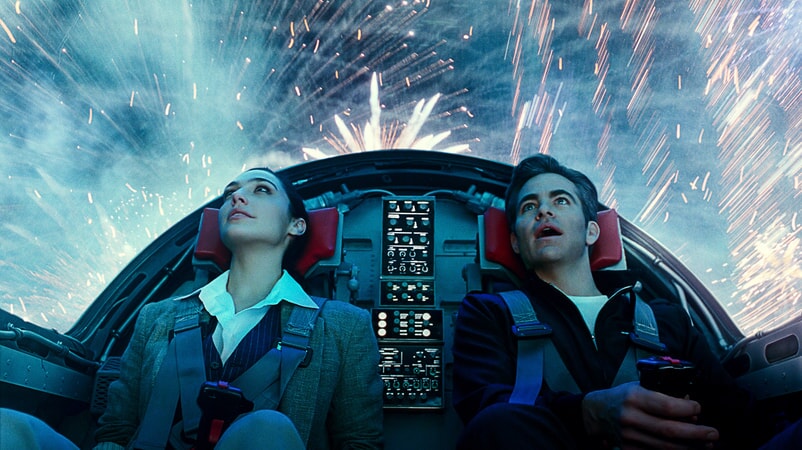 HULLFISH: And you’re also starting to develop that relationship that you’re going to count on when you get into the cutting room full time with her.
HULLFISH: And you’re also starting to develop that relationship that you’re going to count on when you get into the cutting room full time with her.
PEARSON: You begin to have conversations like, “The reason I want to go this direction is because this character at this point is feeling this” or whatever it is — if it’s a performance question or something like that — so it’s informing me too, as far as where the director is headed or what sort of framework they’re carrying around with them.
It’s also my job, as an editor, to try to get into the director’s head as much as I can, so every opportunity I have to do that, I find there’s value in that.
HULLFISH: Sure. And those specifics that you learn from her carry you forward for other decisions that you have to make.
PEARSON: Of course. Exactly. That’s right. Yeah. It’s a process, so it’s all informative.
HULLFISH: How did you two work together in the cutting room? What was your collaborative style with her?
PEARSON: I saw very little of her during production. She very rarely came to the cutting room. When I saw her was by going to her trailer or going to the set if I had questions.
Once we got to post-production she was all about post-production, so we spent hours together every day. She was in the room and it was very collaborative. By the end or even halfway through the post process, I felt more like I was working with my sister because we talked about all kinds of things other than the movie. But that’s all part of the process too.
We spent hours and hours and hours together. Because she wasn’t really coming to the cutting room at all during production, she was also really not looking at cut footage very much, so I said, I get it. “So, I’m more like the lighthouse keeper and if everything seems to be OK, it’s fine. But if I see something coming towards the rocks, I’ll let you know.”
She said, “Absolutely. I don’t want to wrap my head around post-production. Unless you tell me there’s a problem, just keep going.” But what that did mean for me — and was a bit stressful — was when I originally showed her the editor’s assembly of the movie, she probably hadn’t seen 85-90 percent of the footage, so it was a brand new movie for her and it was a lot of me hanging out there to dry.
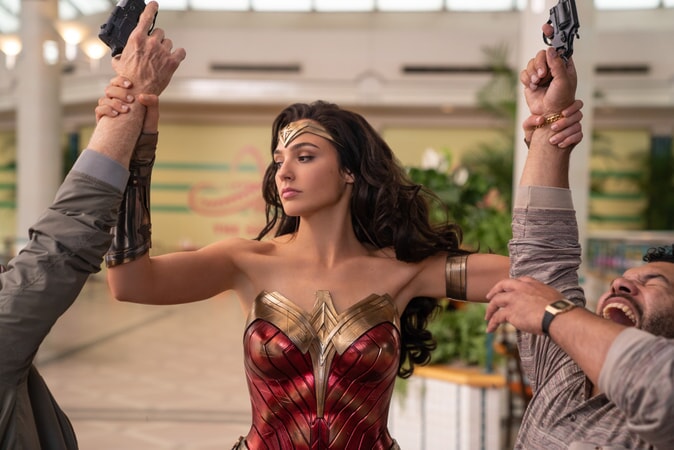 I was happy with the assembly, but when there’s that much of the movie that’s not been exposed to the director it’s hard to know how they’re going to respond. Thankfully she was very, very happy.
I was happy with the assembly, but when there’s that much of the movie that’s not been exposed to the director it’s hard to know how they’re going to respond. Thankfully she was very, very happy.
HULLFISH: Everybody’s a little scared showing that first thing to the director no matter how experienced you are.
PEARSON: Exactly.
HULLFISH: Tell me about showing that assembly. Did you go through the entire film in one shot or did you stop along the way, or did she just want to look at a reel?
PEARSON: Well I had the whole show mounted. I intentionally try to not have that initial screening be in the cutting room, but make it in a screening room — something that’s purpose-built for that so that it feels a bit more like, “OK let’s sit down and watch this top to bottom.”
We had a couple of bathroom breaks, but otherwise, the movie was set to run top-to-bottom, and if she wanted to, we could have just watched it all the way through. I’ve yet to work with a director who — on first assembly — wants to stop and start and ask questions. Usually, they do want to get a sense of it “whole cloth” because that’s how you find the context of what it is that you’ve got there.
You need the context.
HULLFISH: That’s an interesting tip about getting out of the cutting room because watching it at the Avid does give you that sense of, “I can stop. I can go back.” And then you’re not watching it.
PEARSON: I think so. I think that that can work both ways. For example, sometimes if studio executives want to take a look at something, the director and I will decide, “Let’s show it to them in the cutting room, because then it feels like it’s a work-in-progress.” It’s not like, “Here it is, and it’s finished.” It feels like you’re potentially inviting them into the process as opposed to saying, “Here’s the finished piece.”
It just depends. It can be a bit of a political chip to play. But conversely, I also think it’s really helpful — particularly for a director-editor if they’ve been working for weeks and weeks and weeks on something — we had another screening room at Soho that we didn’t use a lot, but occasionally we would go up and just screen the movie in this other space so it felt like we were watching the movie as a movie, not as bits and pieces.
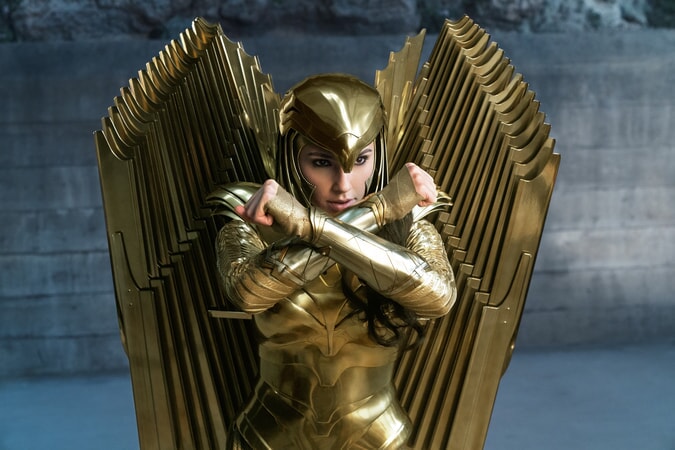 HULLFISH: You can have that sense of being judged when you show that editor’s cut, but in reality, that director is really looking at their own work more than your work.
HULLFISH: You can have that sense of being judged when you show that editor’s cut, but in reality, that director is really looking at their own work more than your work.
PEARSON: Yeah, I think so. It’s hard to not feel like you’re exposing himself when you’re showing an editor’s assembly particularly if the director has not seen much, but every director I’ve talked to or worked with has talked about how horrifying it is for them to see that first assembly because it’s a parade of their failures.
“Why did I do that?” Or “Why did I make that choice?” It probably is much more difficult for them. I’m SURE it is more difficult for them, it’s just that I also feel exposed as well. I think Patty actually was the one that used that expression, “A parade of my failures.”.
HULLFISH: Scorsese in his Master Class that I just saw said, “If you don’t get physically ill watching your first rough cut, something is wrong.” And that’s a guy who’s editing with the same editor he’s had his whole life! Thelma’s a legend, so it’s not like he’s blaming the editor for the failures.
PEARSON: I think it’s just that you’re finally seeing the context of what it is that you’ve wrought.
HULLFISH: How many times had you seen that cut with anyone else? Did it change your perspective of your own edit to watch it with her?
PEARSON: For sure. I’ve heard many, many editors comment on this and I believe it is true — anytime you have somebody else in the room with you, even if it’s in the cutting room or in a screening room as well — as an editor I have a slightly different point of view because I feel there’s someone else in there watching the work and so I’m very attuned to how they’re responding nonverbally or verbally — if they’re laughing, crying.
I find that to be extremely valuable to have another set of eyes in the room particularly when it’s someone who doesn’t isn’t involved in the intricacies of: “Oh. There’s my note. I saw my note.” Because it can turn into that too.
I find it extremely valuable to have the director in the room or a guest. And that’s why, to me, previews are so valuable because now you’re talking about hundreds of people that are in a screening room that don’t know the picture and so all kinds of things are revealed: What’s tracking? What’s not? What’s funny? What’s not funny? What’s affecting people emotionally? And what’s not? It’s an interesting process.
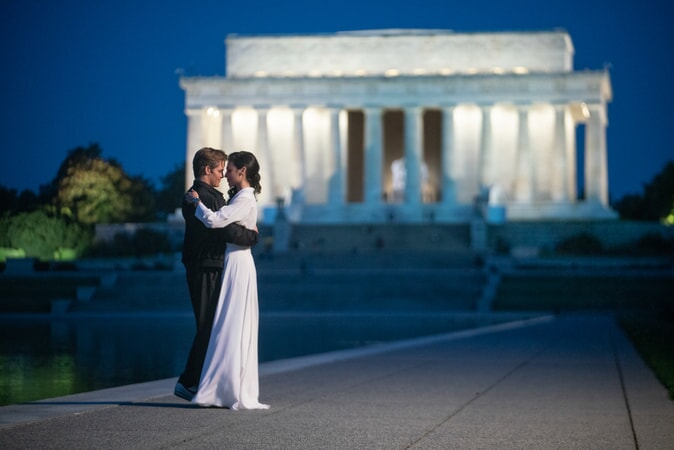 HULLFISH: Did you do anything to prepare her or do you think that she just knows how it is working with an editor and that sense of trust to be able to be in a room when you do see that “parade of failures?”
HULLFISH: Did you do anything to prepare her or do you think that she just knows how it is working with an editor and that sense of trust to be able to be in a room when you do see that “parade of failures?”
To be in a room with someone when you see your own parade of failures is very difficult. How do you build that sense of trust with a director?
PEARSON: You have to do the best you can at reading how a director is doing — particularly when you’re about to get into it for that first time. It is a sense of trust and usually, there’s some little bit of a conversation that I try to have ahead of time about: “I just want to let you know this this and this.”
Unless we’ve had a conversation ahead of time, on the assembly, I don’t very often do any kind of structural changes that deviate from the script. Because unless we’ve been working the cut via PIX or whatever and the director knows that I have structural questions, typically that assembly follows a scripted version.
But, for example, there was a structural question that I had in the third act of this film that was one of the things I kept going down to the set with her to ask “What about this structure here for this?” because it was sort of a vague description of a series of events. It was sort of scripted as a montage.
After going back and forth many times with my laptop about that structure in that section, we found a solution and she said, “Yes. That actually makes sense for me.” But usually, I try not to deviate too much from what the script is because there’s no point in that. They need to see what it is that they originally shot, I think.
I always usually have a few little caveats or “pre-mumbles” as I like to call them. Like, “Scene 17 I chose to do this ending. You shot alternate endings” just so there are no surprises along the way that makes them stop and takes them out of the picture.
HULLFISH: I made that mistake, as I’ve said before on this podcast, with the first film I cut. I decided that some lines should just get cut and I did it without prepping the director first.
The thing to think about when you’re cutting — and I’m sure you know this — is that the director is intimately familiar with the material.
PEARSON: Yeah.
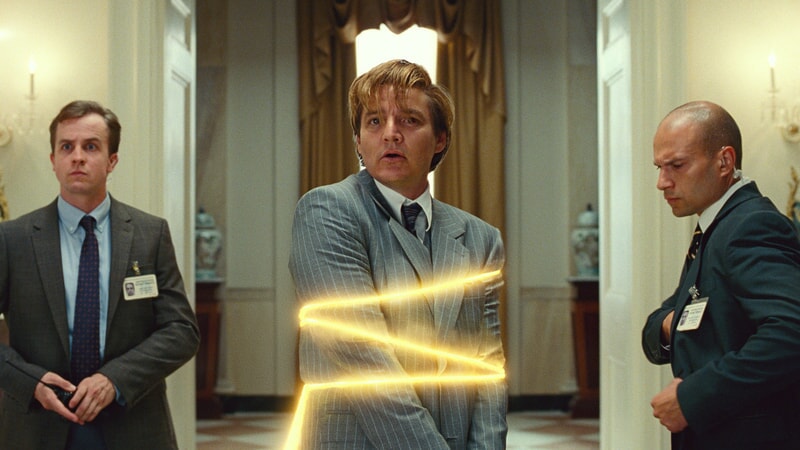 HULLFISH: So it’s different than showing it to an audience where it’s completely fresh to them. The director knows what’s coming.
HULLFISH: So it’s different than showing it to an audience where it’s completely fresh to them. The director knows what’s coming.
PEARSON: Exactly! Yeah.
HULLFISH: And if there are three lines at the beginning of a scene that are missing, that’s going to “bump” for them more than it would for an audience.
PEARSON: It’s a process, not an event. Yes. You could go from A to L, but B, C, D, and E and F and G and H all need to be explored. Because maybe it doesn’t go from A to L. Maybe it really wants to go from A to F to L. You just don’t know until you’ve made that journey.
On a feature particularly — often, hopefully — you have the luxury of more time to really explore different options. Sometimes it’s tighter than others. With WW1984, because we had already pushed the release date from November of 2019 to June of 2020, and now with COVID, it looks like it’s moving to the middle of August (or… Christmas.) But we’ve wrapped now. (This interview was conducted in July of 2020)
We had plenty of time to explore and turn over every stone. Every stone got turned over a few times, I’d say.
HULLFISH: Do you remember what the first cut was, lengthwise?
PEARSON: I don’t. It was lengthy. I’ll just say that. It was lengthier than any picture I’ve ever had at that stage — also quite complex in terms of the interweaving of the characters.
There were certainly things in there that I thought, “Well, this will probably be the only time we ever see this when we watch as editors assembly. Scene 17? Well, this is it.” Some of them did shake out quite easily, but this picture was quite complex in its integration, so it wasn’t as obvious how to tighten it up.
HULLFISH: It’s interesting that you say that you knew scene 17 is going to go but you didn’t cut it. There’s no point, right? You don’t get any brownie points or a gold star if you say you don’t need this scene and you just cut it and look how smart I am.
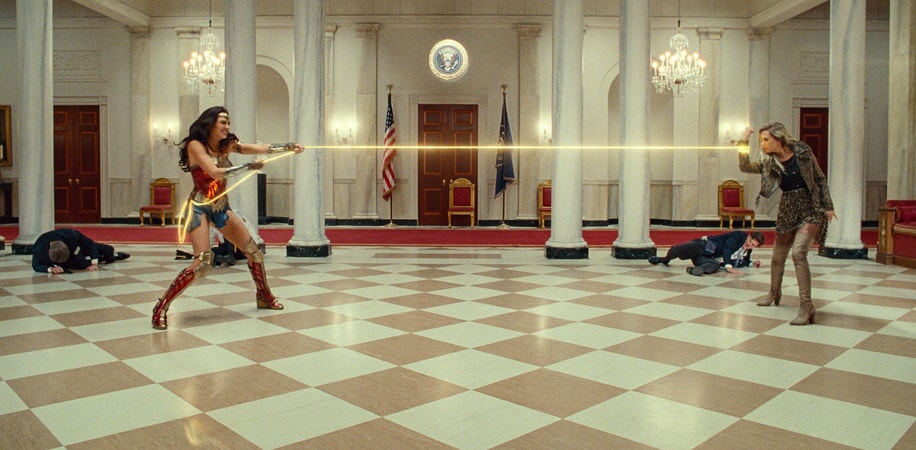 PEARSON: No, you don’t. In fact, I think that can backfire on you initially. Unless it’s a director that you have a long-standing relationship with, and the director is also struggling with a join or tracking a character, I might pitch something like that during shooting — to say, “Look. I’ve tried this” or “Let me show you this a couple of different ways” on PIX or on my laptop and see what you think.
PEARSON: No, you don’t. In fact, I think that can backfire on you initially. Unless it’s a director that you have a long-standing relationship with, and the director is also struggling with a join or tracking a character, I might pitch something like that during shooting — to say, “Look. I’ve tried this” or “Let me show you this a couple of different ways” on PIX or on my laptop and see what you think.
But you’re right. You don’t get any brownie points for being clever. Unless it’s a conversation you’ve already had and you’re prepping the director for something that you might want to try.
For me personally, it would be unwise to pull that as a: “Hey! Guess what I did?!?” But more often than not, the response would be, “But I want to see it the way I shot it,” I would think.
HULLFISH: Speaking of things that you may or may not have had a conversation about — music in a first assembly is probably a huge deal for a director. So was that something you two talked about?
PEARSON: Yes. One of the roles that crossed over from the first Wonder Woman is an extremely talented music editor Gerard McCann. He worked on the first picture and music for her is extremely key. She had used several music editors on the first show but ended up gravitating towards Gerard in the end because they just aligned with each other in terms of their taste and he’s extremely talented.
So early on I wanted to get him involved in the process while we were shooting. He came in for a few weeks in the middle of shooting and did some temping. I had asked him to give me a palette of cues that you know that she responds to. I used some of those cues. And then he came in — I think the last four weeks or so — before we presented to Patty, so he had his hands on a lot of that music.
Some of it was stuff that I had temped, but I leaned on him a lot because I also knew that he had her ear and if he didn’t then he could solve it.
HULLFISH: That also had to be a great safety blanket for you that at least knew that the music was going to ring true to her when she saw that first cut.
PEARSON: We had a conversation. I didn’t just say, “Whatever you want to do, Gerard…” It was a dialog, but I did find that for the most part, his choices were spot-on and very considered and thoughtful.
But yes, as you say, it was a safety blanket. If there were areas that she wasn’t responding to, we knew that together we could have a conversation and he could find out what wasn’t working for her and he could find his way down that road.
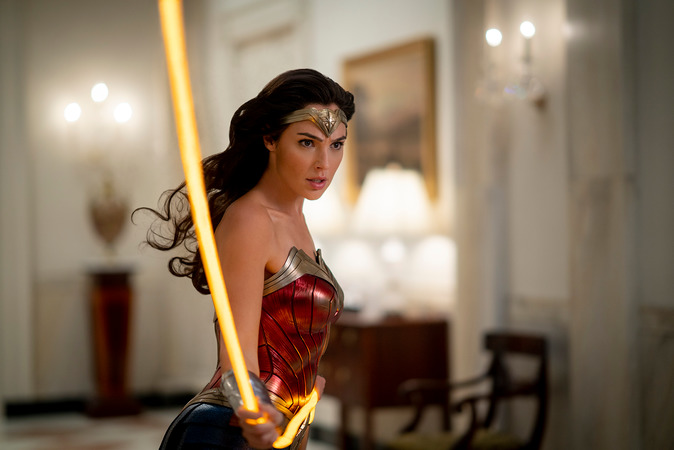 HULLFISH: Or you could just throw him under the bus.
HULLFISH: Or you could just throw him under the bus.
PEARSON: (LAUGHS) Well, I never said that out loud.
HULLFISH: Talk to me about the process of getting from that first assembly. It is a process. It is not a one-and-done kind of thing. What were some of the things that you two explored? Obviously, you can’t speak to a lot of specifics but what were the things that changed that you talked about that needed to be worked on?
PEARSON: Because there’s a large visual effect component to it visual effects need a lot of lead time depending upon the complexity of shots that are involved. It’s no secret that there’s a large sequence that takes place in Themyscira with a giant stadium and a landscape that — for the most part — doesn’t really exist in the real world.
Initially, we had certain target dates that we needed to meet to feed the machine of visual effects, so on these types of VFX-heavy movies, often you can’t just sit down and start at the beginning and work your way from the top to the end. You have to say, OK. Next week we have to turn over X number of shots from the Themyscira sequence so that visual effects can get started on proof-of-concept looks and things like that.
So it was a combination of hitting those targets with some of these big set pieces but then working our way through the picture in a linear fashion from top to bottom.
I would talk to her as we made our way through this. I would say things like, “Would you ever consider losing these lines here?” Or often I would have cut alternate versions when I thought there should be line cuts or perhaps scene cuts and lifts and that kind of thing.
So then as we would work our way through I’d say, “I also cut an alternative this.” So then it was part of the conversation. Not me just presenting these things out of the gate. We found that to be a really great process, but I actually find — for myself — I have the assistants string together every single take of a line reading, so sometimes we would get to a point where Patty would ask, “What other versions do we have of Chris Pine saying this line?” and I would show her these string outs and that was a really useful way of quickly getting to a resolution.
So it was a conversation and a collaboration as we worked our way through it.
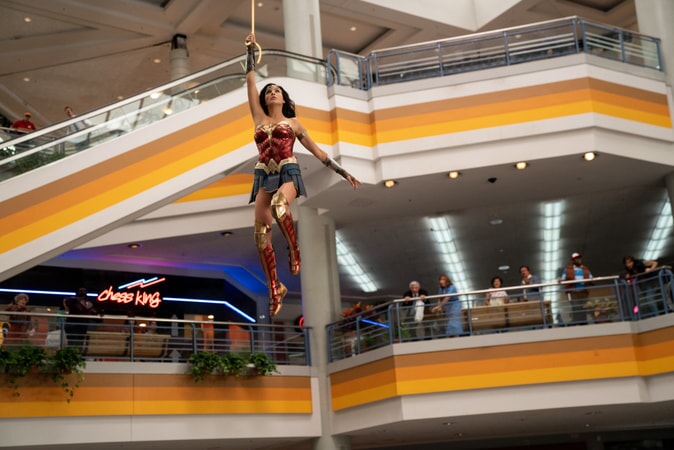 HULLFISH: You mentioned feeding the VFX machine. Was that something that you had to start feeding even during production?
HULLFISH: You mentioned feeding the VFX machine. Was that something that you had to start feeding even during production?
PEARSON: Less so than typical because we had such a long post process. The initial conversation was: “We don’t need to turn over anything during production.” The tradeoff was that during those first few weeks — particularly of post-production — we would have to hit these targets of quite a lot of shots.
That sort of worked and sort of didn’t. We ended up in a bit of a compromise on that, but it still ended up working out because of the extension. Once we had pushed from November to June initially that helped us buy more visual effects time. It was a really tight schedule when we were supposed to release last November (2019). Everybody acknowledged how tight that was, and so it was a real relief when — halfway through production — they pushed to June.
That was because the timeslot made more sense and it made more sense for the health of the movie because it was just going to be crazy to try to finish in that amount of time.
HULLFISH: Did you do any previs editing before the filming started?
PEARSON: I didn’t do much of the previs in terms of the initial assembly. That also was a bit of a back-and-forth process between myself and the previs department. Dan Bradley was the second unit director — who I’ve worked with a few times — so we have a good relationship because I think I understand pretty clearly what it is he’s trying to do, so there were a few instances where he had been working directly with previs and then he would ask me, “Could you just take this sequence — a set-piece — because what I’m trying to do is X Y or Z?” I would then take the previs and move some pieces around and perhaps put some beats that I felt were missing or would help convey the story that he was trying to tell. And so it was a back and forth with previs.
On this picture, I didn’t come in early and start working with the previs from a raw state. It was more in the middle of the process.
HULLFISH: Talk to me a little bit about using previs and cutting a scene that’s fairly visual effects heavy. How do you generate something that’s not really there?
PEARSON: It’s an interesting sandbox to play in — the visual effects world and these visual effects sequences. How you integrate previs animation and or postvis animation into these sequences — for example, in Themyscira we might have young Diana running across the stadium. Well, there is no stadium obviously, but I have young Diana and so I would have my visual effects editor, Tino — the very talented Constantin Brodt — I’d say, “Could you please do a composite for me? Take the previs animation of the stadium and then let’s place young Diana in it.”
Other times there might be set pieces where two characters are up on wires and one of them is largely a CGI character but the environment itself doesn’t exist and so often I would take a stunt performer and do a picture-in-picture of them placed over the realized previs so you could understand, This is meant to be the action — this larger frame. But here’s the actual capture that I’m pitching to work for this moment. It’s already sounding more complex than it is.
At its simplest notion, it’s a shot-by-shot basis to figure out how to best tell those stories when — as you say — there’s very little in the frame that exists.
HULLFISH: I’m interested in the skillset that you have that goes beyond being an editor. You’ve worked on so many big movies — and also so many VFX movies — is there a difference working on a big movie? What other skills are there beyond just simple cutting that you have to think about?
PEARSON: Part of it — and part of what I enjoy about it — is that the visual effects aspect of it allows a lot of malleability that you don’t have in an all-in-camera scene. You shoot that scene and that’s it. It’s done. You don’t very often have the opportunity to say, “What if it was THIS instead?” Or “what if outside that window there was a flying thing?” Or “what if the lasso did THIS?”
So I think that malleability and creativity is an area that doesn’t exist with an in-camera film. We all do a lot of manipulation even in standard films with split-screens and morphs and all kinds of things you can do now much more easily than you could a couple of decades ago.
Because of that you’ve got this huge visual effects department which I enjoy communicating with and liaisoning with and having a collaborative relationship with in terms of how to creatively solve problems — and talking about, “I could really use some postvis on this shot.”
So it’s just a different playing field, which I like. I also like to go back and forth. I’d rather not just do one big tentpole film after another but I’m not always able to captain that.

HULLFISH: I was going to say, looking at your filmography, you’ve failed at NOT going from one big tent pole to another because that’s what it looks like.
PEARSON: Yeah well yeah… (laughs)
For example, a few years ago I did a picture which I really enjoyed — and I enjoyed the director and the process — called The Accountant and that was pretty much an all-in-camera film. And I really enjoyed that and I’d love to get back to one of those.
As it happens, the next picture I’m doing is called Uncharted. It’s fairly big, so I’ve probably failed again but it looks like a lot of fun. I read the script and I thought well this seems like a lot of fun. My 10-year-old self wants to go see this movie. Actually, my 58-year-old self wants to go see this movie and work on it.
HULLFISH: How big was your crew on this?
PEARSON: Well on my picture editorial crew I had the fantastic Tom Harrison-Read, who was my additional editor. I had worked with him 12 years ago on a James Bond film. So he was my first-slash-additional editor and then we had Rob Avery was second assistant editor as was Laura Mountford. Holly Burn was my apprentice. Five of us in picture editorial and then we had Tino as the visual effects editor and he had two assistants below him, so that’s like seven there.
Just depends on how wide you expand — if you include visual effects editorial. Music editor Gerard, and then at some point, we had an additional music editor as well. So seven, eight, nine. It just depends on what part of the process we were in, too.
HULLFISH: Let’s talk about sound a little bit. What did the sound department give you as far as like a little toolbox to work with or what were you doing in picture editorial to kind of build that world out in sound?
PEARSON: We had the great fortune of having two really talented sound supervisors — Richard King on the American side and Jimmy Boyle on the U.K. side and that was partly done because we were doing post in the U.K. so it was nice to have somebody local that we could reach out to. Tom Harrison-Read and I would have a conversation about what we needed musically and he would reach out to Richard and or to Jimmy. They would be bouncing us stuff while we were shooting.
 Then we also went back in mined the original Wonder Woman because there were very specific sounds, like the sound of the lasso, some of her movement, and things like that. So we would constantly reach out to them — if not weekly, every couple of weeks we might want specifics.
Then we also went back in mined the original Wonder Woman because there were very specific sounds, like the sound of the lasso, some of her movement, and things like that. So we would constantly reach out to them — if not weekly, every couple of weeks we might want specifics.
Somewhere about three-quarters of the way through the process, we sent a few of the set pieces off to them to actually go ahead and do a pass which was also really helpful because some of the stuff was so specific. Rather than just getting pieces from them, we wanted them to do a pass.
There was an advantage to working with a crew that was in the States while we were in London because we had an extra eight hours a day to work with. It’s an interesting dynamic working that way — you sort of buy another eight hours of the day.
HULLFISH: A nerdy tech question: how much do you manage your audio tracks? How much do you just put stuff wherever you want and then your assistants get it into the right places? Do you put dialogue or production tracks on 1 through 4? Are you working in stereo? Are you working in surround?
PEARSON: I work LCR, so left-right-center, so I sent production tracks to the center and I typically have my production dialogue tracks around 1 through 4 or so. Obviously, working LCR I work in stereo, so I have stereo tracks.
I try not to go beyond 16 tracks. I feel like generally, I can manage with that amount of tracks. Tom Harrison-Read, and my other firsts that I’ve worked with in the past are typically fantastic at sound as well, so they are often cutting a lot of effects — doing a lot of effects work for me.
I keep my mono production tracks typically around 1 through 4. On this show, Tom really wanted to have a mono track — one that was dedicated left and one that was dedicated right. I don’t remember why he wanted that. I never really utilized that but he was adamant about it so we did that. That’s about as nerdy as I can get on that.
HULLFISH: I prefer to have a template so that I know that tracks are going where they’re supposed to go and name the tracks. I know other people just put stuff wherever it works at the moment and have someone else clean it up later.
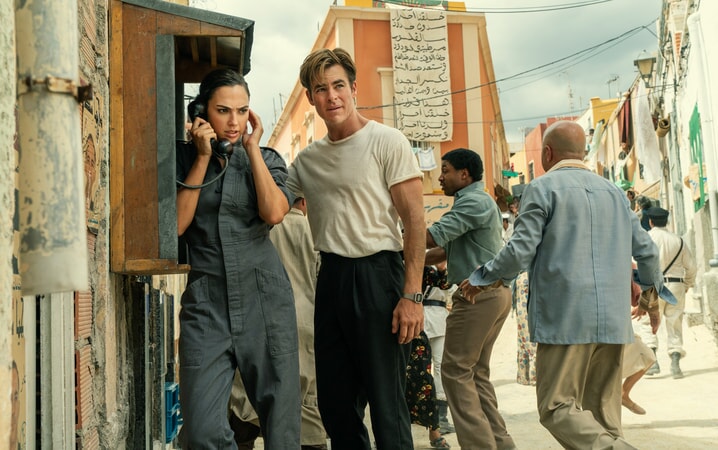 PEARSON: I have a habit of putting things in the same place. One thing that I do, which looks messy when you look at the picture tracks — but I know a lot of other editors do this too — is I will often stack alternate takes in the picture track if it’s just a cutaway. I might have many different choices — six different choices, eight different choices — for an MOS cutaway.
PEARSON: I have a habit of putting things in the same place. One thing that I do, which looks messy when you look at the picture tracks — but I know a lot of other editors do this too — is I will often stack alternate takes in the picture track if it’s just a cutaway. I might have many different choices — six different choices, eight different choices — for an MOS cutaway.
That’s part of that dialog process too — that collaboration process — of sitting with the director. Patty might say to me, I don’t quite like what she’s doing there and I can show her six other alts that I pulled for a reaction shot. Or sometimes I’ll even keep as a placeholder a reminder of another line reading there and keep the production track in there, but mute it. So that it’s a reminder to me that I also liked this performance. That becomes a shortcut to say, “Oh, I see that I also tried something else here, Patty. Do you want to take a look at that?”
But it kind of looks a little messy for a while for the assistants because I might have stacked twelve tracks deep on my picture tracks because I’m moving things up and down and playing around with it.
HULLFISH: Are you muting those? Avid has a mute function now. How are you NOT looking at those? You’re just monitoring the highest track?
PEARSON: I tend not to do the muting as much probably because that didn’t exist for so long that I’m just defaulting to the one that’s sitting up top. If I’ve had an alternate line reading in there I might keep the track there but just mute the track. So I do find that to be a valuable tool.
I’m still not sure if it’s faster for me than moving things up and down. I tried both actually more so on this project than any other in terms of muting picture tracks. That’s also slightly dangerous to me somehow.
HULLFISH: I’d really like to talk to you about structure but I’m not sure how much we can talk about that without getting into specifics. Is there anything you can think of that you can discuss the way it was in the original cut and how it changed? But I know we’re getting into dangerous territory.
PEARSON: You’re right. I don’t think I can give you any specifics. We had wrapped up pretty much by the end of November 2019 but because we still had some time, the studio was interested in us turning over a few more stones — as it were. Particularly in the third act, there was a pitch for an idea of a third act structure that Patty and I — and all of us, really — thought was pretty intriguing, and so we came back in December and tried a couple of structural things in the third act which we thought were pretty successful.
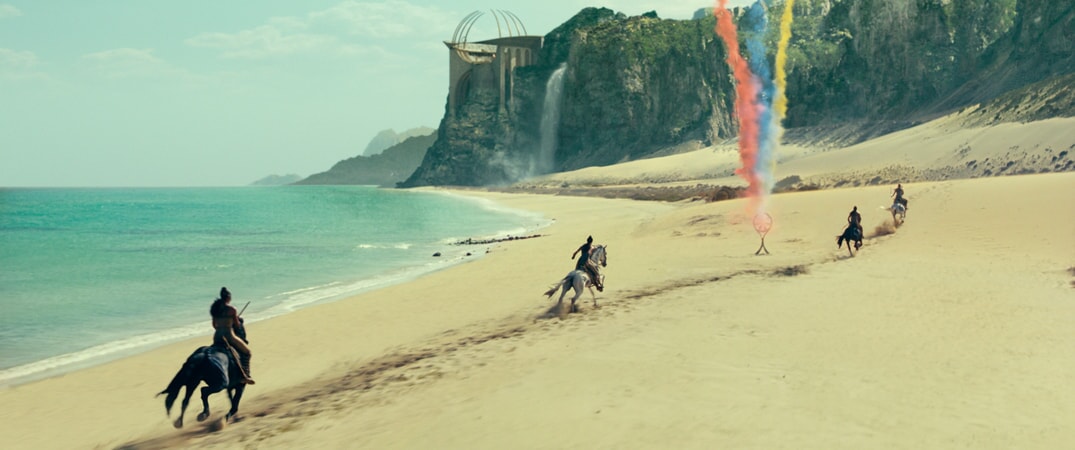 Because of those, we locked picture to that, but that also dictated then a couple more days of scoring because now things worked in a structural fashion that was slightly different. The story was being told in a slightly different way and so music needed to tell a slightly different story as well. So we went back to the UK to do another couple of days of scoring and another week and a half or so of dubbing and finally “re-finaling” the picture.
Because of those, we locked picture to that, but that also dictated then a couple more days of scoring because now things worked in a structural fashion that was slightly different. The story was being told in a slightly different way and so music needed to tell a slightly different story as well. So we went back to the UK to do another couple of days of scoring and another week and a half or so of dubbing and finally “re-finaling” the picture.
HULLFISH: Did that structural change in December then go through any kind of test screening?
PEARSON: We primarily did it amongst ourselves. We did it with sort of our own internal friends-and-family kind of screenings. At that point, the studio and Patty were not that keen to have another screening per se because of the security ramifications. It’s just so difficult to screen these things. Even though everybody signs these nondisclosures, inevitably somebody just decides they want to talk about it.
I think we all felt that we knew it was working already. It’s just this one aspect that we want to see if it’s tracking and we all were confident that it was.
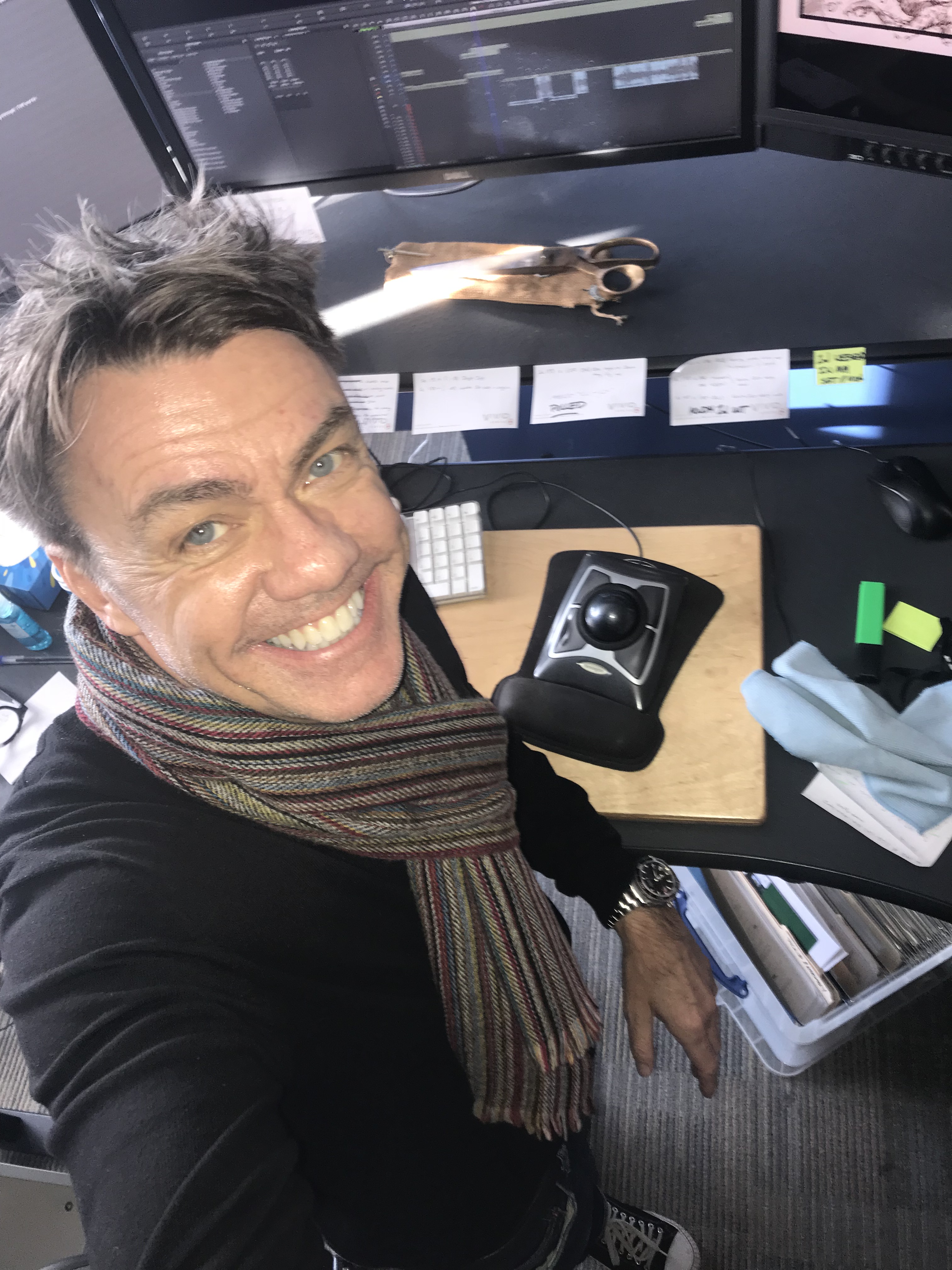
HULLFISH: Any tricks or topics or challenges you want to talk about?
PEARSON: One of the things that’s always interesting to me is people have said to me — I’m sure they have said it to you too — I’m so interested in being an editor. I would love to come in and just watch you work someday.
HULLFISH: (laughs).
PEARSON: That’s just the last thing you really want to do because it’s like watching somebody write on a laptop. I mean, it’s such an internal dialogue that a person is having. There’s nothing spectator-friendly about the sport of film editorial so it would just be mind-numbing.
I could talk to you about split-screens and FluidMorphs and that’s an instant case for narcolepsy right there.
HULLFISH: I have watched other people edit and I realize when I don’t have my fingers on the control how incredibly mind-numbingly boring it is.
PEARSON: Oh yeah. To hear somebody going back over a word… But you don’t hear it when you’re cutting because you’re in it. It’s water torture.
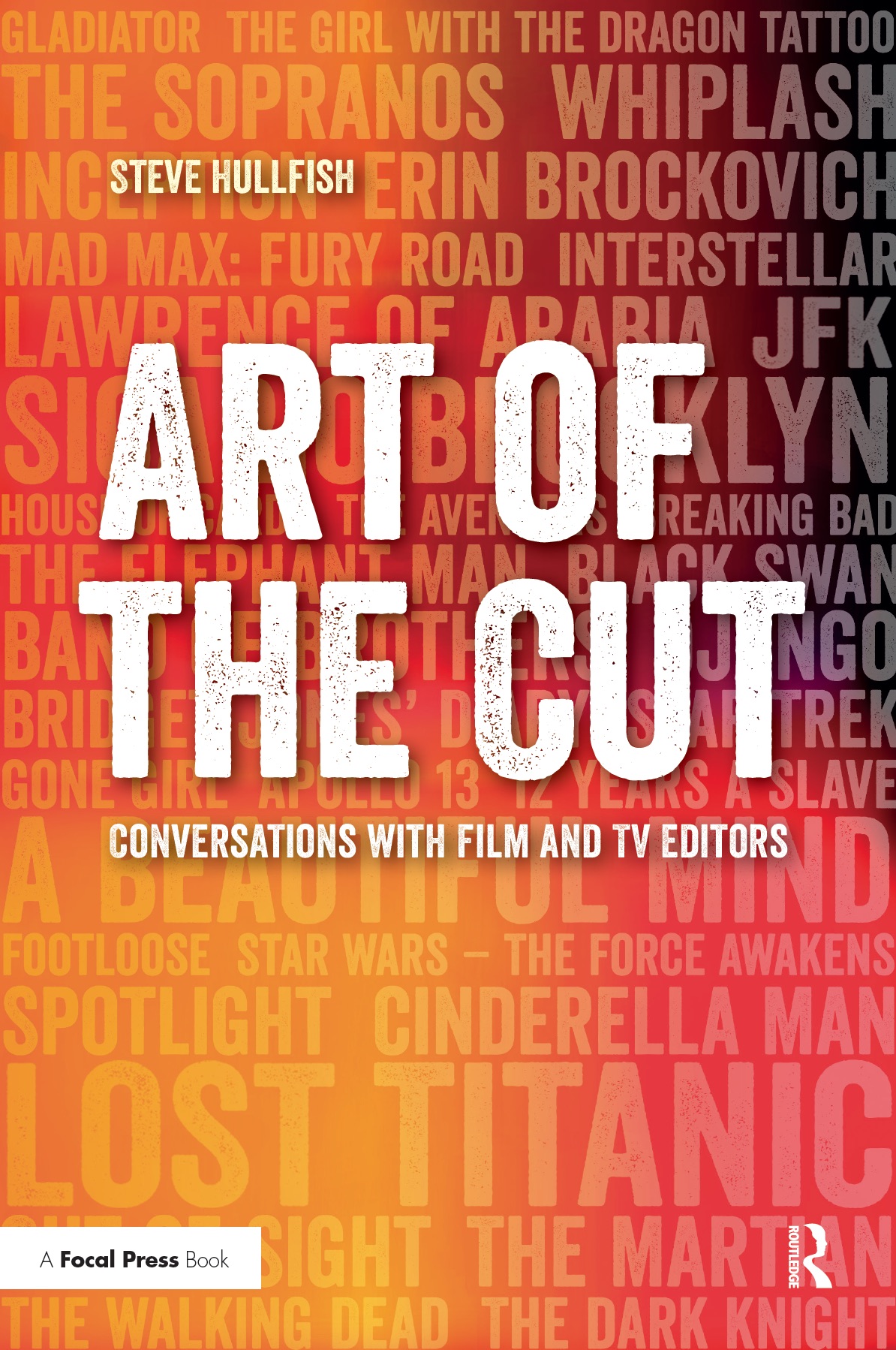 To read more interviews in the Art of the Cut series, check out THIS LINK and follow me on Twitter @stevehullfish or on imdb.
To read more interviews in the Art of the Cut series, check out THIS LINK and follow me on Twitter @stevehullfish or on imdb.
The first 50 interviews in the series provided the material for the book, “Art of the Cut: Conversations with Film and TV Editors.” This is a unique book that breaks down interviews with many of the world’s best editors and organizes it into a virtual roundtable discussion centering on the topics editors care about. It is a powerful tool for experienced and aspiring editors alike. Cinemontage and CinemaEditor magazine both gave it rave reviews. No other book provides the breadth of opinion and experience. Combined, the editors featured in the book have edited for over 1,000 years on many of the most iconic, critically acclaimed, and biggest box office hits in the history of cinema.

Filmtools
Filmmakers go-to destination for pre-production, production & post production equipment!
Shop Now








